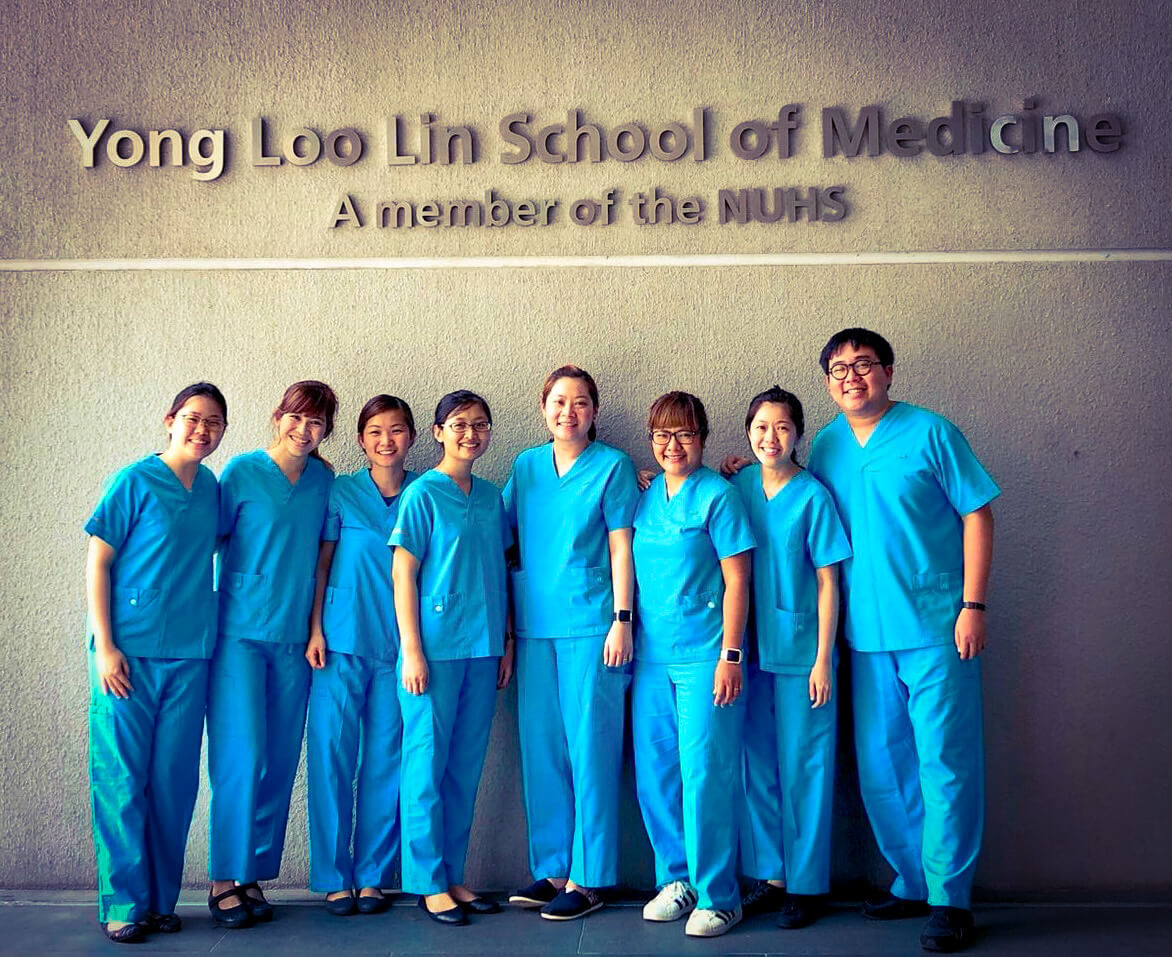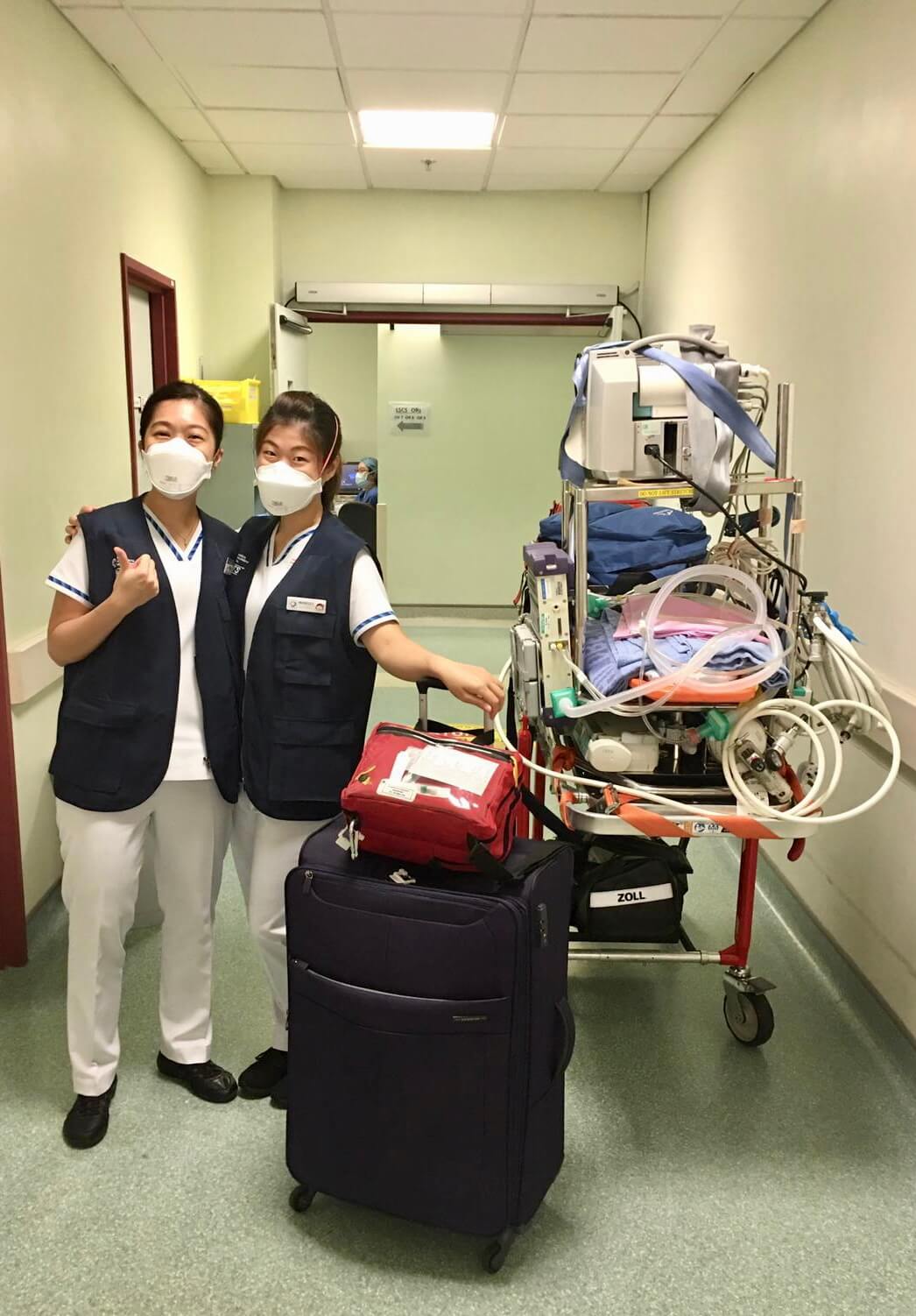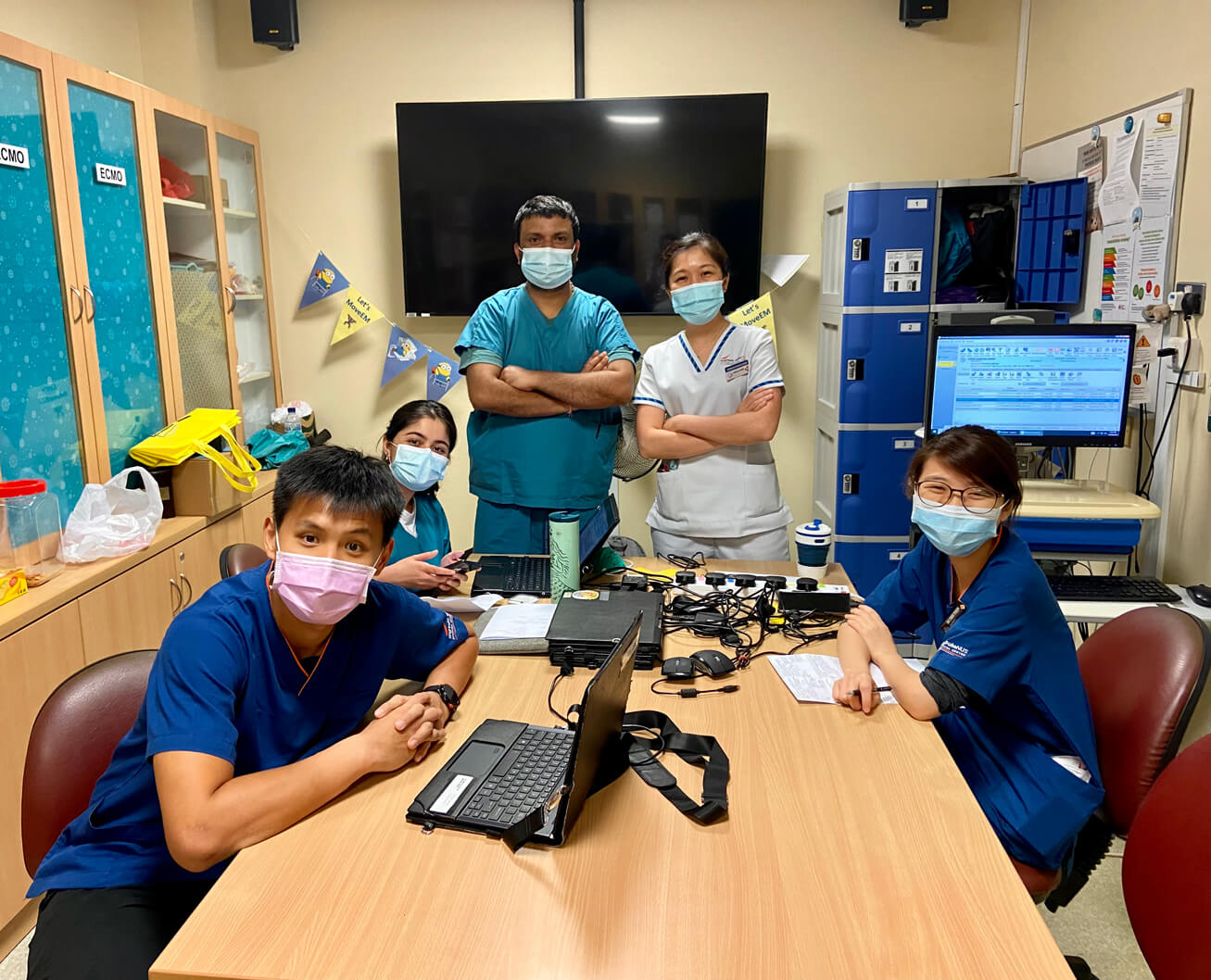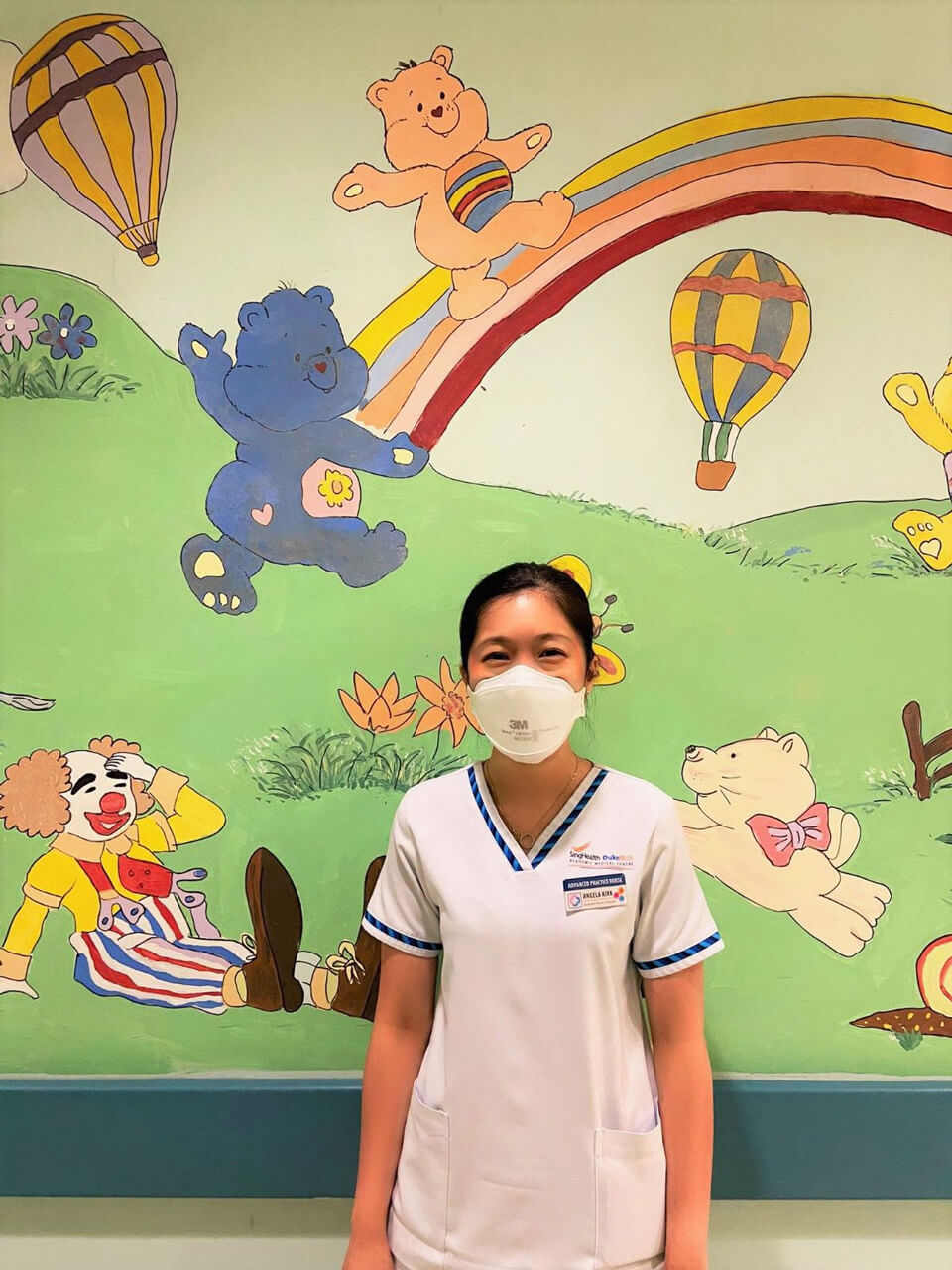Her love for children made it easy for Advanced Practice Nurse (APN) Angela Kirk to pick her specialty in her nursing career.

The Assistant Nurse Clinician from the Division of Nursing at the KK Women’s and Children’s Hospital (KKH) even made a commitment early and took a scholarship with KKH in her second year of Nursing diploma studies, right after her paediatric posting. Since then, she has never regretted her decision and has been in this speciality for more than 10 years.
Upon graduation, APN Kirk has been working in the KKH Children’s Intensive Care Unit (CICU). Her interest in this area grew as she developed her skills and knowledge. Despite being in the unit for more than a decade, APN Kirk says every clay is still different, unpredictable, exciting and challenging.
Doing a Masters degree in Nursing is relatively new, making APN Kirk the first in her unit—the KKH CICU—to do so. In April 2022, she would have reached her second year in the unit. Being a pioneer in the field, she has been active in the medical and nursing teams, helping to further define the APN’s role in the unit.
She believes the APN bridges the gap between the medical and nursing side of healthcare and is an advocate for patients. She also believes that through empowering other nurses and participating in advanced nursing research work, it can increase the standard of Nursing and improve the care of her young patients.
Furthermore, APN Kirk adds that in the CICU, nurses are the only healthcare personnel “who are always by the patient bedside 1,500 healthcare workers resigned in the first-half of 2020 first-half of 2020—compared to the 2,000 a year before the pandemic.
In March 2021, APN Kirk did an advanced nursing research and published a paper evaluating the psychosocial impact of the COVID-19 pandemic on paediatric healthcare workers. It was a study initiated by her CICU consultant.
“She was working on the survey questionnaire and asked for my opinion, particularly from a Nursing perspective. At the time, we were in the midst of the circuit-breaker and facing a lot of uncertainties, with the need to quickly adapt to changes in workflow and staff deployment. Manpower is tight as CICU nurses are needed to care for CICU patients as well as the isolated CICU patients in another new unit.
When she saw that I was interested in the topic, she asked if I was willing to be the main author of the study.”

The survey, carried out in the middle of the nationwide lockdown in Singapore, found a high prevalence of symptoms of depression, anxiety and stress among frontline paediatric healthcare workers who participated in the survey.
On the other hand, factors associated with the negative psychological impact were “largely modifiable” and key ones included the lack of access to physical activities, lack of rest and stigma from the community.
APN Kirk believes the advanced nursing research has created awareness that paediatric frontline healthcare workers are not exempt from the psychological stressors incurred during the COVID-19 pandemic.
“These findings were before the surge in paediatric cases which we are now facing. With this current surge, the psychological stressors among frontline healthcare workers today may have changed,” she says.
The senior management at KKH is cognisant of the mental wellness of staff and APN Kirk says there are “We were also given a Healthcare Rejuvenation Off-Day (HeR0 Day), which is a day off for us to catch a break from work and rest,” she adds.

When she was pursuing her Masters in Nursing at NUS Nursing, APN Kirk conducted a meta-analysis on topical application of human breast milk on early umbilical cord separation.
Most umbilical cords fall off between 10 and 14 days, and the normal range is seven to 21 days. If the cord falls off before seven days, it is considered early but the baby’s parents can continue normal routine care while observing for abnormalities such as redness, bleeding, pus and foul-smelling discharge.
“My teammate and I were looking for a suitable paediatric topic as we were from the paediatric track. Our lecturer encouraged us to find one based on a few criteria she recommended, such as a topic with randomised controlled trial and systematic review that had not been done,” says APN Kirk.
The use of topical human breast milk has been suggested as an effective cord care regimen as breast milk has shown to have antimicrobial and anti-inflammatory effects.
“Proper care of the umbilical area is important as omphalitis, an infection of the umbilical cord stump can occur,” explains APN Kirk.
“After birth, the umbilicus becomes colonised with different bacteria and tracking bacteria along the umbilical vessels may lead to septicaemia—or bacteria in the blood—which can result in neonatal morbidity and mortality. Until the umbilical cord separates from the baby, it is considered an open wound and a potential source of infection. Early separation is also a goal as the presence of the umbilical cord can be a source of maternal anxiety.”
The World Health Organisation (WHO) estimates that a quarter of the world’s neonatal deaths is due to infection—three in four of these occur in the first week of life, with the umbilical cord being the gateway. Omphalitis, an infection of the umbilical stump, is more prevalent in developing countries than developed countries because of the difference in hygiene standards and practices.
“After researching, we found that this topic fits the criteria and could be done,” adds APN Kirk.
Her study included seven randomised controlled trials (RCT) and found that topical application of human breast milk was an effective and safe way to reduce cord separation time.
At KKH, dry cord care—as proposed by WHO—is the standard that the hospital follows. “The practice here is dry cord care—keep the cord clean and dry, using only soap and water for umbilical cord care, and there is no treatment required,” she says. “Antiseptics, including alcohol and chlorhexidine, have no advantage over dry umbilical cord care in reducing the incidence of omphalitis in developed countries. In developing countries with a higher risk of omphalitis, chlorhexidine is the recommended topical agent for cord care.”
Following her advanced nursing research, APN Kirk performed the whole meta-analysis process with the guidance of her lecturer. This time her study involved more than 1,000 newborns.



